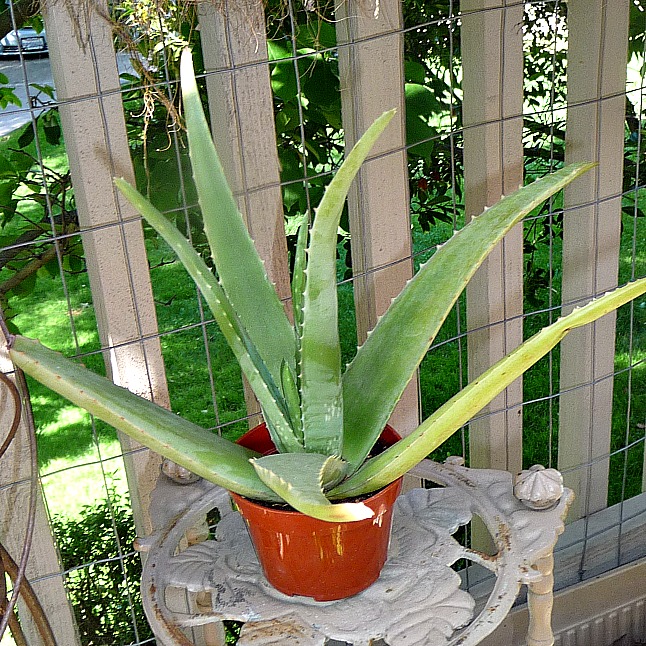
Aloe in filtered shade on a porch.
I had my first aloe experience many years ago when I spent the night at a friend’s house. The next morning, I hunched over the bathroom sink while brushing my teeth and my elbow inadvertently landed on her hot curling iron. Yeoch! Her mother heard my yelp, assessed the situation and motioned me to follow her. We stopped in front of a collection of various potted plants. She leaned over a spiky one, cut off a leaf, and handed it to me. She said the plant was Aloe vera, and that I should squeeze out the gooey (stinky) sap onto my burn, which had turned bright pink and hurt. I did as I was told, and was surprised at how cool and soothing it felt. I was instructed to apply the gel frequently, and sent me home with several leaves*.
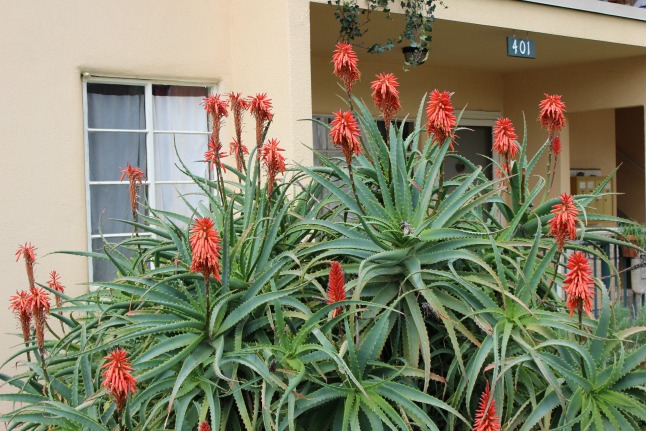
Aloe arborescens.
Teenagers have a tendency to get scars from all kinds of things, so when this particular burn didn’t scar, I was intrigued and impressed. I bought my own aloe plant and used it frequently for burns, bites, cuts and scratches.
In college, I had an assignment to study a plant genus, and aloe was the natural choice. Believe it or not, they can be trees, shrubs or perennials.
Description of Aloe
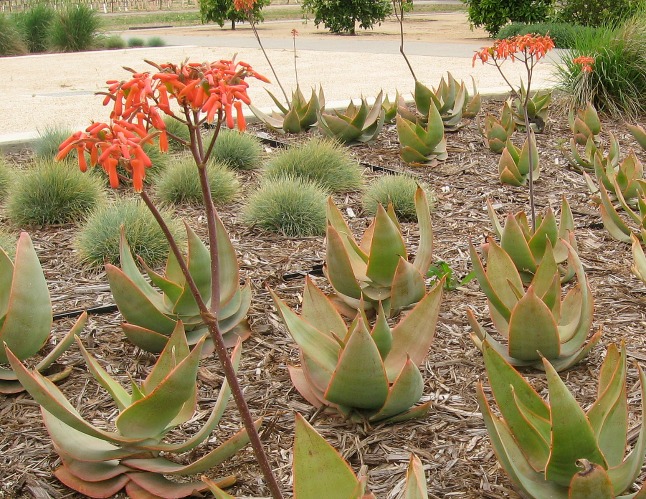
Aloe in the landscape.
Plant Care
Aloes have beautiful blooms that are very show and can last for weeks. The colors are usually shades of yellow, red, pink or orange. Check local nurseries for varieties that do well in your area, but remember only Aloe vera is used medicinally.
Aloe barbadensis (formerly A. vera) USDA Zones:9-11 Height:1-3′ Width:2′ Sun/Shade:Full sun or light shade. Move plants in containers into light shade during hot summer season. Grows best indoors Water Requirements: Can withstand dry periods, but best with some water. Uses:Apply to minor cuts, burns, insect bites, and bruises. *It’s important to note that sap may cause skin irritation in some sensitive individuals. Anne does not recommend creating your own home remedies for internal use with this plant. More study by scientists needs to be done on this topic. |
Originally published: May 30, 2011
Updated: September 15, 2016


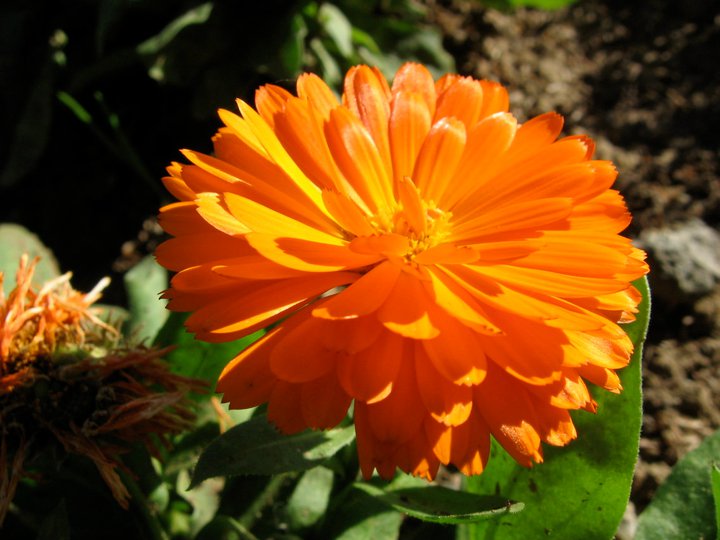
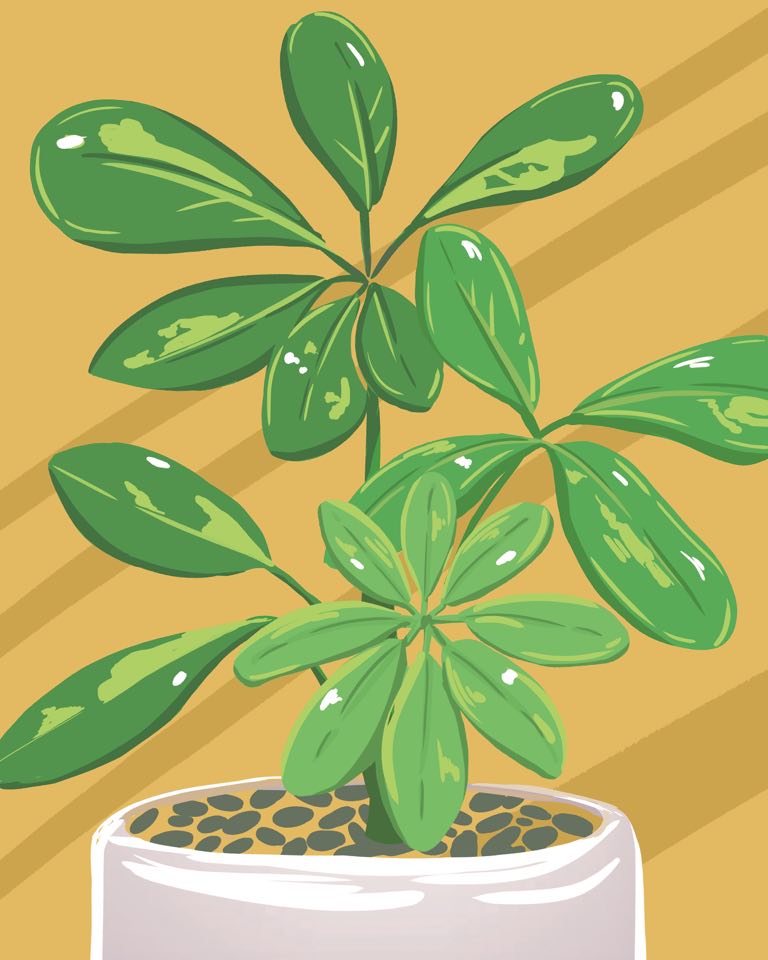
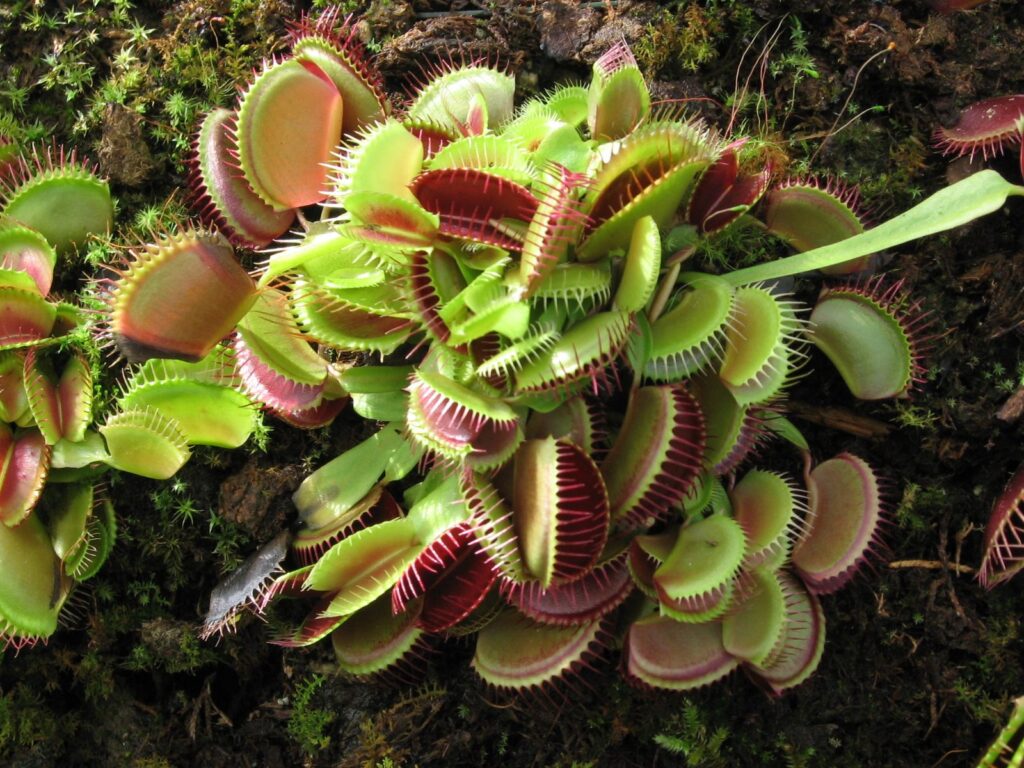
June 10, 2011 at 11:19 pm
Ive been told that Aloe vera can have poisonous varieties… and one should be careful when buying them… how do you know which ones to buy?
June 13, 2011 at 10:12 pm
Hi Priya, great question! It may surprise people to know that many plants in their homes and yards are poisonous. Luckily, most adults do not attempt to consume houseplant leaves or berries from an unknown shrub in the yard. However, there are times when folks just want to create and consume their own “herbal remedy” which is a risky thing to do. This is when cases of poisoning may occur. Other cases are when children and pets try to eat houseplants or plants in the yard. It’s important to teach children never to put plants in their mouth, and to keep a close eye on pets.
The terms “toxic” and “poisonous” are used frequently to describe plants, and cause people alarm. It’s important to note that every plant is different. Some plants contain low levels of toxin, and others high levels. Effects of consuming a plant can be different. Symptoms range from mild to severe nausea, diarrhea, heart or kidney problems, paralysis, asphyxiation and death. (After reading this sentence, you may never look at another plant in the same way!) Although all of these symptoms are possible, they also depend on what part of the plant was eaten and how much was consumed. Did the person suck on the plant? Make a tea? Chew the plant? Swallow it? All of these factors have to be taken into account.
To answer your question about aloe, the plants in the Aloe family have leaves and stems that contain latex (which is why some people may have an allergic skin reaction if they apply it topically). Latex is composed of glycosides, one of which is called ‘aloin’ that can be toxic to humans and animals if consumed in large quantities.
What’s interesting is that aloe vera juice is sold in health food stores and many people swear by it for all sorts of reasons. However, in many countries, it is against the law to sell aloe vera juice that contains aloin, so it’s removed during processing.
In closing Priya, I hope I’ve answered your question, please feel free to continue this discussion! As you may guess, I can talk about plants all day, although I’m at work for most of it so can only write at night and on the weekends. 🙂
I came across a really cool book on poisonous plants called Wicked Plants and is by Amy Stewart. I’m going to have to buy it. http://www.amystewart.com/wpexcerpt.html